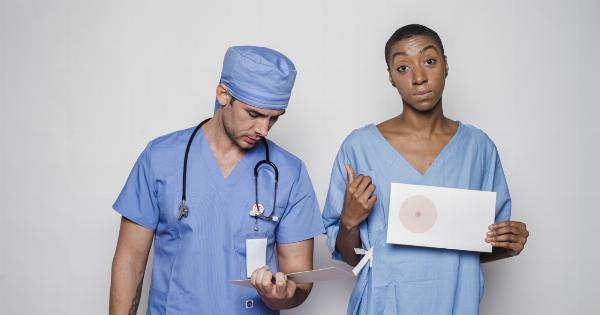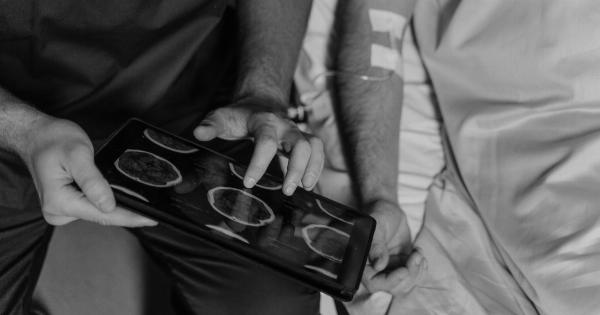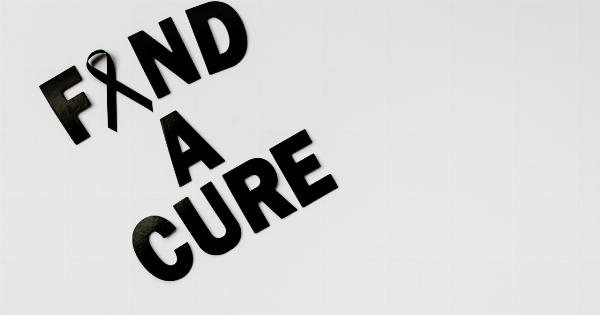Male breast cancer is a rare form of cancer that develops in the breast tissue of men. Although it accounts for less than 1% of all breast cancer cases, it is essential to raise awareness about this condition and understand its symptoms and causes.
In this article, we will explore the signs and risk factors associated with male breast cancer.
Symptoms of Male Breast Cancer
Similar to breast cancer in women, male breast cancer can present various symptoms. These may include:.
1. Breast lump: The most common symptom of male breast cancer is the presence of a firm, painless lump in the breast tissue or under the nipple.
2. Changes in nipple appearance: Male breast cancer can cause changes in the nipple, such as inversion, retraction, or scaling of the skin around the nipple.
3. Nipple discharge: Unusual discharge from the nipple, including blood or a clear fluid, may indicate the presence of male breast cancer.
4. Changes in breast size or shape: Male breast cancer can lead to changes in the size or shape of the breast or uneven contours.
5. Skin dimpling or puckering: Like in women, male breast cancer can cause the skin over the breast to dimple or pucker, resembling an orange peel.
6. Redness or scaling: In some cases, male breast cancer may cause redness or scaling on the breast or nipple.
It is crucial to note that these symptoms can also be caused by non-cancerous conditions. However, if you experience any of these signs, it is essential to consult a healthcare professional for proper evaluation and diagnosis.
Causes and Risk Factors
The exact cause of male breast cancer remains unclear. However, several risk factors have been identified that increase the likelihood of developing this condition. These include:.
1. Aging: Advancing age is a significant risk factor for male breast cancer. It typically affects men between the ages of 60 and 70.
2. Family history: Having a close family member, such as a mother, sister, or daughter, with breast cancer increases the risk of developing male breast cancer.
Certain genetic mutations, such as the BRCA2 gene mutation, play a role in this increased risk.
3. Klinefelter syndrome: Men with Klinefelter syndrome have an additional X chromosome, increasing their risk of developing breast cancer.
4. Exposure to estrogen: Certain medical conditions or treatments that increase estrogen levels, such as hormonal therapy for prostate cancer or testicular conditions, may increase the risk of male breast cancer.
5. Liver disease: Cirrhosis of the liver, a condition often associated with heavy alcohol consumption, has been linked to an increased risk of male breast cancer.
6. Obesity: Being overweight or obese can contribute to hormonal imbalances that increase the risk of male breast cancer.
7. Radiation exposure: Previous exposure to radiation, such as radiation therapy for other cancers, may increase the risk of male breast cancer.
8. Testicular conditions: Some testicular conditions, such as undescended testicles or testicular atrophy, have been associated with an increased risk of male breast cancer.
It is important to remember that having one or more of these risk factors does not guarantee the development of male breast cancer. Conversely, individuals without any risk factors can also be diagnosed with this condition.
Regular self-examinations and routine check-ups with a healthcare professional can aid in early detection and prompt treatment.
Conclusion
While male breast cancer is relatively rare, it is crucial to be aware of its symptoms and risk factors. Detecting this condition early can significantly improve outcomes and increase treatment options.
Therefore, it is important for men to perform regular breast self-examinations and seek medical attention if any noticeable changes or symptoms are present. By understanding the symptoms and causes of male breast cancer, we can work towards better prevention, diagnosis, and treatment of this condition.



























